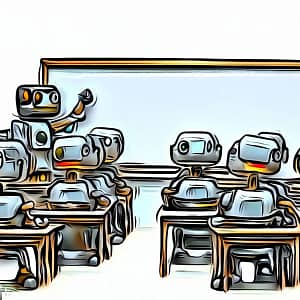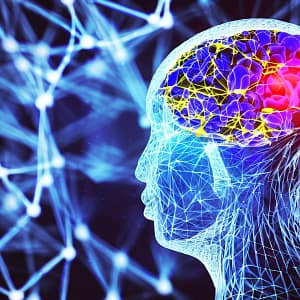Overview
Machine learning is a kind of artificial intelligence (AI) that enables computers and systems to learn from data without being explicitly programmed. It involves creating algorithms and models that can automatically analyze data, find patterns, and make predictions or decisions based on those patterns.
To start with machine learning, we need to provide the algorithm with a lot of relevant data. The algorithm learns from examples in the data and extracts useful information. When it encounters new data, it uses what it has learned to make predictions or take action.
For example, if we show ten different pictures of books to a child and tell him that these are called books. If we now show a new picture of a book that is slightly different from the previous ones, the child will most likely recognize it as a book. Thus, the more pictures of different books we show him, the more accurately he will be able to identify them.
Types of Machine Learning
There are different types of machine learning approaches. In supervised learning, the computer learns from labeled examples where the desired output is provided along with the input data. In unsupervised learning, the goal is to find patterns or relationships in unlabeled data. Reinforcement learning involves teaching an agent to interact with its environment to achieve certain goals.

Applications of Machine Learning
Machine learning is used in various fields like autonomous vehicles, fraud detection, language processing, image and speech recognition, and recommendation systems. It helps automate tasks, gain insights from large databases, and make informed decisions, transforming many industries.
Examples of Machine Learning
Let’s look at some examples to understand machine learning better.
Example-One
Imagine you want to create an email spam filter. Instead of explicitly programming rules, you can use machine learning. Machine Learning can train the filter on a dataset of labeled spam and non-spam emails. The algorithm learns from the patterns in the email features and creates a model to predict whether an email is spam or not.
Example-Two
Suppose your employer is a retailer who wants to improve sales forecasts. With machine learning, you can analyze past sales data along with factors like promotions, seasonality, and pricing. In addition to , external influences such as weather or economic indicators. The algorithm learns from the data to create a forecasting model that can estimate future sales based on learned patterns. This helps the business make important decisions about inventory management, resource allocation, and marketing strategies.
Example-Three
One common example is image recognition: to identify objects in an image like how humans perceive and recognize objects. It is used in a variety of applications, such as facial recognition, self-driving cars, and medical diagnosis.
Stages
Learning a machine on how to recognize images has five stages:
- Data collection: A vast dataset of labeled photos is compiled, with each image assigned to a distinct class or category. For example, if the job is to distinguish distinct flower species, the dataset would include photos of various flowers together with accompanying labels.
- Preprocessing: The photos acquired are preprocessed to improve their quality, decrease noise, and standardize the input. Resizing, normalization, and filtering are all common preprocessing techniques.
- Model training: To train the image recognition model, machine learning algorithms are used. During training, the model adjusts its internal parameters to learn to identify patterns and traits that distinguish one class from another.
- Validation and fine-tuning: A second validation dataset is used to assess the trained model’s performance and identify areas for improvement.
- Model deployment: Once the model has demonstrated acceptable performance, it can be used to recognize photos in real-world contexts. The trained model is fed new photos, which generates predictions or probabilities for each class label. The image is then categorized depending on the likelihood. The more data entered, the more accurate the prediction, just as in the example of the child above.
Applications
Image recognition with machine learning has a wide range of applications, including:
- Object recognition: Identifying and categorizing things inside photos, such as different types of animals, automobiles, or ordinary objects.
- Facial recognition: Detecting and analyzing human faces for purposes such as identification verification, emotion recognition, and facial attribute analysis.
- Medical imaging: Aiding in medical diagnosis by evaluating medical pictures such as X-rays, MRIs, or pathology slides for diseases, tumors, or anomalies.
- Autonomous vehicles: Using cameras and sensors, vehicles can perceive and understand their surroundings for tasks such as object detection, lane recognition, and traffic sign categorization.
- Visual search: Using visual similarity to search for similar or related photos, which has applications in e-commerce, content management, and art recognition.
Conclusion
In conclusion, machine learning allows computers and systems to learn from data, adapt to new information, and improve over time. It brings efficiency, accuracy, and data-driven insights to various industries, giving businesses a competitive edge and helping them make better decisions.
References:
https://mitsloan.mit.edu/ideas-made-to-matter/machine-learning-explained



